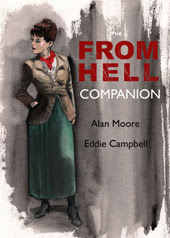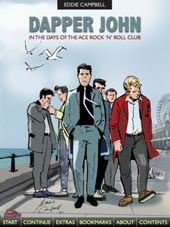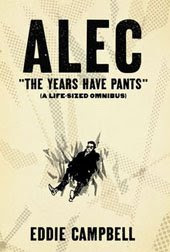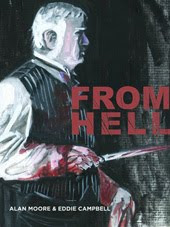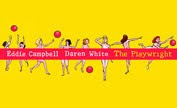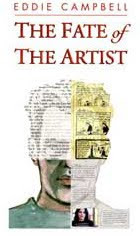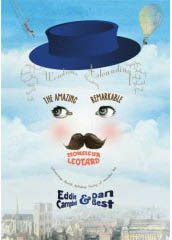Rounding up outstanding arguments. The two people who were following my theoretical ramble about integrating all the aspects of a comic into a reading of its meaning should note that I concluded my train off thought off the premises. There follows a summary, including the entire post that you probably missed:
here. 5th December:
First let's look at this notion, common to both quotations above, that you can separate everything else from the 'story' ...here. 22 December:
These critics do not go much beyond a simplistic 'what happens' in it. I mean on the level of a statue being naked rather than on the finesse of its chiasmos. ...Hooded Utilitarian. 28 December (on a long thread my comment addressed a habit of criticizing a comic's story and art as though they are things that can always be separated. Persepolis and Habibi had been so discussed and both found wanting in one or both aspects):
An essential demand of the newer kind of comics under discussion, in which a unified whole is presumed, is that we find a more apt way of talking about them. Satrapi’s Persepolis, when it opens, is the first person narrative of a ten year old girl. The drawing is perfectly right for the story; it expresses the world view of a ten year old girl living anywhere. Characters are simplified in a way that is charmingly naive and perspective is nearly non-existent. Whether Satrapi is capable of a different kind of drawing is not relevant to a discussion of the book. The artist is not a musician being hired by a symphony orchestra that expects her to be able to play the whole classical repertoire. She is giving us a record of her personal experience. She has a natural grasp of what is important in telling a story, which unfolds with simplicity. By the end of the first book we are surprised by how much information we have taken in, as we weren’t aware of taking it in. We thought we were listening to a child talking.
The authentic voice of the original can be appreciated by comparing it with the more professionally knowing treatment of the material in the animated movie, as in this excerpt:. Some parts of are
excruciatingly embarrassing:
The professionals who worked on it will go onto their next gig and we may hope they will be teamed with material more suited to their outlook.
As to Habibi, Matthias shows that there is nothing in Thompson’s art that is not in the overall meaning of the book. To praise the art separately is the reflex of the critic who has unconsciously recognized the ‘generosity of intent’ that is all over the work and doesn’t want to end on a rude rebuke. That intent is as much the CONtent as anything in the book that appears to be about the Arabian world. Looking at it again two months after I first opened the work, what I see is a cartoon romantic fantasy. I’m incredulous that it has inspired so much argument, or that in a medium that produces a mountain of crap over and over every year anybody could think this is among the “worst” that comics has to offer in 2011.
As always, the criticism against Thompson is that he didn’t make the book that thinking folk wanted him to make. I recall that the title of the TCj review of Blankets in 2003 (2004?-Tcj is never timely) consisted of those words more or less (‘Why Blankets isn’t the book… ?) Here it’s that Habibi is not a complex poem about modern life as reflected in the travails of the middle east, and also he didn’t draw it more in the manner of Blutch.
I remain however dubious about the remark that there is an implicit assertion that the book is more than broad melodrama. I thought that Nadim’s observation that there was more of Disney’s Nights than Burton’s was apt. And the ecological message isn’t more profound than ‘we need to look after the world because it’s where we live’.
While the lavish attention to tangential information raised hope of profundity, some critics have had trouble with him breaking up the linearity of the story unnecessarily. But I see that as just a Tarantino thing. A normal person nowadays takes in so many pre-digested stories (still on holiday, I think I inadvertently watched four movies yesterday) that rearranging the normal running order of events becomes a way of pumping some fizz into the flat drink. There can’t be anybody who doesn’t know how stories go. Sometimes I come into a movie ten minutes late just to make it more interesting. I tried it with Inception yesterday and it still didn’t work. We are a society that is weary with it all. We get more complete stories daily than ever before in history. We shuffle the pack to stave off boredom. Lists. the Months of the calendar of pregnancy, the names of the rooms in the palace, the planets, the nights of Sheherezade, the walk-ons of the Cheshire cat, the ninjas of Frank Miller, the Goddess Bahuchara Mata. Witty juxtapostions: the prophet at the farthest limit of human understanding plays out over the slave putting a spanner in the works in the Rube-Goldbergian plumbing inside the heart of Wanatolia. it’s a play-bauble being turned around and viewed from every possible angle. It’s not the ink line that is the virtuoso show, but the cartoon invention, the prodigious flow of ideas. The ink line serves the demands of clarity, of the ‘control’ that has been discussed above, and it speeds in comparison to Blutch’s because that also is demanded of it. It is liquid, and the ideas run as though out of a tap that has been left on, spilling out the supply of water necessary to quench the thirst of a careening dash through this Arabian fantasy.
And as with Satrapi, that is why Thompson’s drawing is inseparable form everything else in the book. There is certainly much that I find odd in it, including a coy Middle American sense of humour, as in the farting little man in the palace. Isn’t farting viewed differently in Arabia? And the convoluted treatment of sex in Thompson’s work will certainly one day attract a separate study.



















